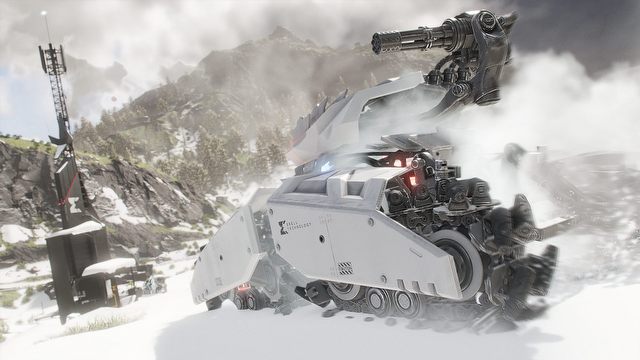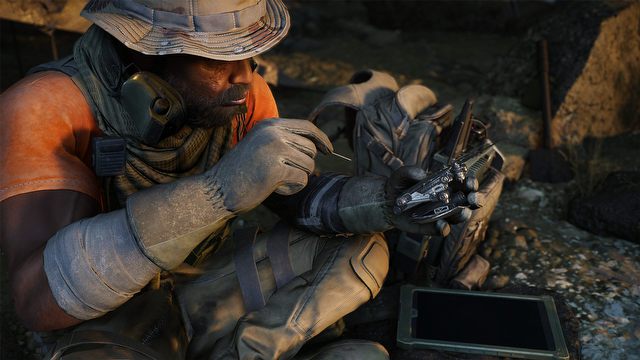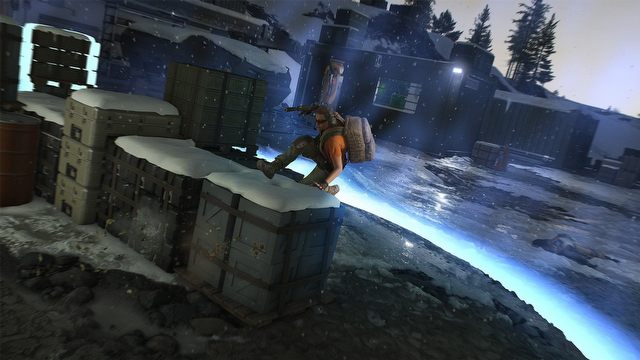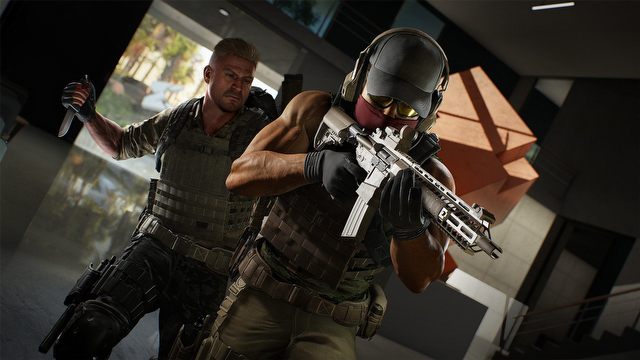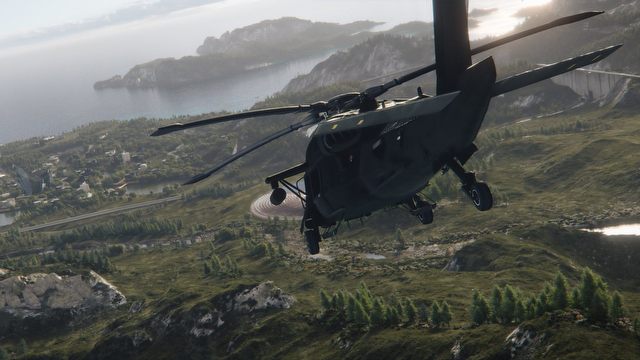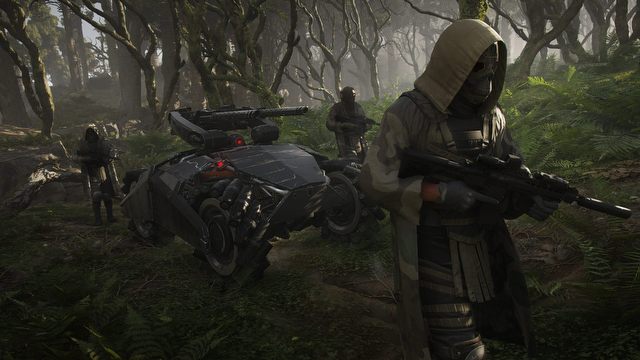Ghost Recon Breakpoint – A Total Game to Suit All Tastes
Ghost Recon: Breakpoint is a total game – a production that ambitiously aims to combine all the current fads and satisfy everyone. Is it even possible to create such a game? And if it is, is there a risk of saturation?
There's a prevailing opinion among gamers, stating that if you've played one game from Ubisoft, it's as if you played them all. The French publisher has truly mastered the formula of open-world games to perfection, and it's hard to deny there are aspects of these that simply work beautifully – after all, they’re a lot of fun. Things are similar with Ghost Recon: Breakpoint, in which the formula of Wildlands was expanded with a lot of elements from The Division 2 and Assassin's Creed: Odyssey, practically transforming the new Ghost Recon into a looter-shooter. Can you take this sort of combining the mechanics even further? You can!
Although I've only spent a few hours with the game, the most accurate way to summarize it is this: if you've played Ghost Recon: Breakpoint, it's like you've played most of the games currently on the market. The sources of inspiration go far beyond Ubisoft's own catalog, making Breakpont one of the most versatile production out there. Some of these additions fit perfectly into the premise of Ghost Recon, others seem a bit forced. The overall perception will mostly depend on our expectations and previous experience... And so, some players will find it to be a huge megaproduction that offers nearly everything one can desire; others – an undistinguishable blend of features that tries to be all of the following:
- Anthem
- Tomb Rider
- Days Gone
- The Division 2
- Destiny 2
- Counter-Strike: Global Offensive
- The Crew 2
- Forza Horizon 4
- PlayerUnknown's Battlegrounds
- Call of Duty
- any other modern game service
Ghost Recon – looter shooter
Before we take a closer look at the smaller elements featured in Ghost Recon: Breakpoint, it's worth explaining the most significant change in Wildlands – i.e. reorienting towards a looter-shooter. As in The Division 2, each piece of gear is now labeled with a color, denoting rarity and level. Loot chests are scattered around the map, items can also be dropped by defeated enemies. Fortunately, there are no complicated statistics of equipment and weapons – these are as simple as in Destiny or the latest Assassins – we change a level 10 rifle for a level 13 and hence get promoted.
The Division came under great flak for the dissonance caused by resilience of enemies – a common thug in a jumpsuit could take three full mags of 5.56-mm rounds before finally dying. Developers of Ghost Recon: Breakpoint anticipated this problem and went for a compromise. A headshot is always enough to get rid of an enemy (two headshots if they have a helmet). When we get lost in an area with opponents of a much higher level than ours (of course, they have a skull symbol above their heads!), it still is possible, but we also become more vulnerable to their attacks, and we can die in an instant. Hostile forces still have futuristic drones, and they are the mandatory sponges for bullets with a visible healthbar.
The ups and downs of looting
Does it work for Ghost Recon? Chests with loot are, in the end, sort of free lootboxes, and opening them is – nilly-willy – addicting/engaging. We deviate from the path, sneak into a bunker and get a high-level vest and gun – a cheap trick, dare I say, but there's no denying that the mesolimbic dopamine pathway loves it, and we want more. Leveling up thus replaced the tedious resource collection from Wildlands, and this, in a sense, is a welcome change. However, it also comes at a price.
The small, incoherent absurdities are a nuisance. Don't be surprised, for example, if you see someone changing their fancy, military-grade gloves for yellow rubber ones just because they're higher level. You can't play your favorite rifle for the entire game because new levels are only available for other guns. It gets a little worse when people in co-op run off to collect loot instead of shooting at the enemy and completing the mission objectives. Here, unfortunately, there is a gap between the smart mission designs in The Division, where collectables were mostly located between scenes of combat, and the crates with loot could be found in the open world, where engaging in missions was optional.
Finally, drones, or Ghostrecon's bullet sponges, are a complete, utter misunderstanding. Compared to our commandos, they look like technology from another planet. I felt like I had launched a game of Destiny again, and had to shoot a huge tank on Mars for half an hour. Here the tank is smaller, but the fight looks exactly the same. After 10 minutes, 4 deaths and 8 clips, the little behemoth lost just a small portion of the health bar, and I was in "Exit to desktop" sort of mood.
Would it be faster and more effective in cooperation? For sure. Would it be cooler, more atmospheric? Nope. That's just a lazy method of increasing the difficulty of combat, especially in co-op, which is completely out of line with the authors' concept: "We want you to feel what it's like to be a spec-op.” I felt more like a madman, a space marine whose pulse gun was taken away, and he was punished with a rifle from the department of archaeology. Space drones, unfortunately, spoil the integrity of the game world both when it comes to the mechanics, and the storyline.
HEY, CAN I BORROW THAT?
Ghost Recon: Breakpoint not only borrows from other games. Other titles also borrow from Ghost Recon – for example the Gunsmith mode. Known ever since the times of Xbox 360, the ability to customize weapons in a graphically appealing form was recently featured in Escape from Tarkov, or the upcoming Call of Duty: Modern Warfare. It's a pity though that compared to the above games, this mode is a little poorer, and the models of weapons aren't equally good – maybe because of the third-person perspective, which doesn't allow to see the weapons very well anyway.
The Ubergame
The sudden turn towards the system similar to Destiny, The Division, or the latest Assassins is only part of the innovations and borrowings in Ghost Recon: Breakpoint, and given that the color-based leveling was also recently featured in The Crew 2 – the change is not very surprising. What is surprising (and actually admirable) is how many hallmark elements of other games the developers were able to squeeze into this title.
Anthem, Days Gone
In the game, an enclave of civilians is our main base. While it's very similar to The Division 2, especially when you notice the children playing around the place, and that entering and exiting it lasts forever, exactly like in the first part of The Division. However, the ability to ask NPCs for information about the world and the available dialogues reminded me more of Fort Tarsis from Anthem, and some archetypes of the NPCs are strongly reminiscent of Days Gone. The base is of course full of NPCs offering side quests, and some stores with gear that change their stock every few hours.
Tomb Rider
A bonfire in the woods, here we craft our tools. Lara Croft in Tomb Rider was able to upgrade her gear in caps scattered across the map. The Ghosts also have their own campsites, where they can improve... themselves. Drinking and eating gives you greater resistance to wounds and injuries for a limited time, a moment of yoga reduces fatigue, and playing with a gun improves weapon accuracy. The campsites are also places where you can restock grenades, bandages and syringes for treatment – just like in a Far Cry. The campsites are particularly useful in coop because players are able to share their equipment.
PlayerUnknown's Battlegrounds
The PvP mode Ghost Wars will be available in Breakpoint exactly at the launch date. Unfortunately, it will not feature the newest game mode from Wildlands, i.e. the Mercenaries mode, which was a pretty original variation on the battle royale for 8 players. Instead of fighting to find a landing pad, and a helicopter extraction, Breakpoint introduces a typical blue energy dome gradually reducing the battlefield, and collecting randomly scattered gadgets that was already present in Mercenaries. According to the devs, this will force campers to change their spots every now and then. Would it be possible to make it a little more original? Certainly!
Counter-Strike: Global Offensive
Looking through the inventory in Ghost Recon: Breakpoint, I noticed quite a comprehensive set of melee weapons to choose from. Large bayonets, knives or sickles of various colors immediately reminded me of CS:GO. Interestingly, knives are not part of the weaponry, but belong to the category of apparel, so they're more of a fancy addition. Will some models be just as rare and desirable as these in CS? Time will tell.
The Crew 2, Far Cry 5
In Ghost Recon: Breakpoint there also will be a garage, where you will be able to keep one of the few dozen types of vehicles – just like in Far Cry 5. This is perhaps one of the least useful novelties – the ability to call in a pick-up or an armed off-road in the Wildlands seemed enough. Here, we can buy ourselves a shiny two-door Ferrari-style supercar – but why would that be useful for a squad of commandoes fighting for survival...?
Call of Duty
Want to stand out in online competitions? Unlock and chose one of several dozen emblems as the background of your nickname, then pick the appropriate symbol – something straight from a Call of Duty!
Forza Horizon 4
I admit, Forza Horizon as a point of reference here is a bit of a stretch, because items such as dozens of colorful t-shirts were a choice already in The Division 2 or, in a smaller quantity, even in the Wildlands, but after adding the dancing emoticons to the mix, the feeling is exactly the same as when you receive a pair of glistering gumboots instead of a Porsche in Forza. These elements simply feel out of place in a game about special forces.
Destiny
In addition to the previously mentioned loot, leveling, and bulletproof space tanks, Breakpoint will also feature very challenging cooperative raids. This is seemingly also an element borrowed from The Division 2, but recall that it appeared there only after the community of the game demanded the mode similar to that found in Destiny. Whether this form of gameplay will work well in a tactical shooter that Ghost Recon aspires to be, remains to be seen. For the time being, though, the images of a huge structure in the center of a volcano look quite familiar.
The default, modern game service
All the above sentiments concerning the abundance of stuff in the upcoming game spell out one thing: game as a service. Ghost Recon: Breakpoint will feature a time-limited chapters, events, or seasons (the nomenclature doesn't matter) that will offer new missions, features, and prizes. Every day, we'll be looking at as many as twelve daily missions, earning different currencies and opening boxes with random content. It's difficult to pinpoint a single game that inspired this fantastic idea. It's just become standard for modern games – this will be a service supported over the years, which – compared to Wildlands – is something new for the series.
It's still an amazing sandbox for commandos
This list of inspirations may look suspicious, but that doesn't mean Ghost Recon: Breakpoint isn't a game on its own terms, or that none of the good stuff from Wildlands is there. The sheer volume of the game might be intimidating at first. However, we quickly discover that somewhere under the shell of all these unlockables, factions, and emblems lurks the same awesome sandbox, in which with a group of friends can truly have fun. The game has retained the huge tactical freedom, the ability to approach the target from every direction, from every vehicle, which, combined with the great customization capabilities of our hero gives one of the most complete soldier simulators on the market.
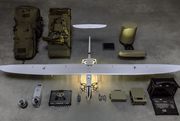
DRONE WARFARE
Everything indicates that the future of war really belongs to drones. In 2014, more drone operators were trained in the US Army than pilots of bombers and fighters combined. Unmanned land and airborne drones R&D is currently in full swing. Recently, the Russian UralWagonZawod boasted of plans to build autonomous versions of the T-72 tank, which seems a very rational solution.
Poland, of course, has less success than the US or China, but this does not mean that they do not exist at all. Designed and produced over the Vistula model FlyEye company WB Electronics was exported to Ukraine, where it was used in the realities of this battlefield.
One of the most interesting novelties of Breakpoint is a special "guide mode," which is disabled by default. It allows you to go through the story without indicators of mission objectives on the map. The only way to find you bearings is to refer to the briefing, and information from the NPCs, such as "small, abandoned building east of the lake." Something like that was available previously, but only in the form of making the game more difficult by turning the GUI off. In Breakpoint, each mission is prepared so that we can play a pathfinder ourselves. And in case of problems, a single tap on the menu restored the traditional aid on the screen. I also liked the design of maps for PvP battles. The creators managed to avoid linearity, for which all Call of Duty games are known, so the position of the enemy troops is never obvious.
It's not a game, it's a hobby
Ubisfot games are famous for scope and the fact that maxing them out takes dozens of hours. Ghost Recon: Breakpoint clearly wants to try and break another record here, being not so much a huge, one-time adventure, bur rather a game to play everyday for months, and not just in PvP. It's already the same genre as Destiny 2 and The Division 2, and it seems that the creators really want the players to feel the game has enough content on day one, and that there's something for both fans of solo play, cooperation, and competitive PvP. Breakpoint is a complete game that has everything. The only question is: will it really have the legs to keep us engaged for months, or even years, or will it become tedious before it even gains momentum? We will see about that in early October.
DISCLAIMER
The expanses related to the author's trip for the game's presentation were covered by Ubisoft – we appreciate it, guys!
